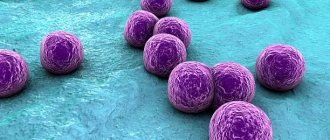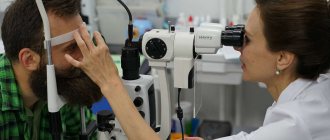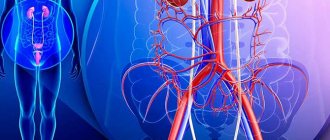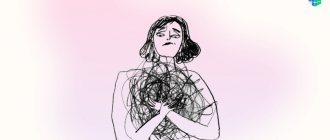Apraxia is a disease that is characterized by impairment in the performance of goal-directed actions.
At the same time, despite the fact that there is a desire, as well as physical ability, a person cannot perform any gestures or body movements. In addition, the disease proceeds in such a way that there are completely no disturbances in coordination, as well as signs of paresis.
The disease affects the cerebral hemispheres and along with it the pathways of the corpus callosum. Apraxia can develop as a result of a number of pathologies, and currently experts divide the disease into several types, which are distinguished depending on certain factors, such as location and others.
Some forms of the disease can only be diagnosed by observing a person perform certain tasks. Thus, as an example, we can note the loss of skills:
- drawings that were previously present;
- write;
- tie shoelaces;
- playing a musical instrument and others.
Forms, types and classifications of apraxia
- Kinesthetic: it is impossible to control one’s own movements, for example, to tie one’s shoelaces and fasten buttons on one’s own, and also to show an action without the object itself that is necessary for this, for example, to show how to turn on the water.
- Kinetic or dynamic: it is impossible to build the correct sequence of actions, since the transition from one separate simple movement to another is disrupted.
- Regulatory: the ability to perform unusual, new and not necessarily complex manipulations is impaired, so the patient uses familiar patterns, for example, trying to put out a lighter like a match.
- Spatial and constructive: the ability to create a whole from several parts, to compare concepts “top-bottom”, “left-right”, etc. is impaired, so the patient cannot get dressed, make the bed or perform other simple tasks.
There is no unified classification of the disease, since its nature has not yet been fully studied by specialists. Some doctors distinguish types of apraxia depending on the disorders themselves (motor apraxia, speech apraxia, etc.), on the part of the brain responsible for motor activity (frontal, cortical, etc.), on the side of the body (unilateral and bilateral), etc. Also There are ideomotor apraxia, in which it is impossible to perform even simple movements, ideational, in which it is impossible to perform a chain of complex actions, despite the fact that the patient performs individual actions quite easily, limbic-kinetic, in which the accuracy and dexterity of movements (usually the fingers) are impaired.
Apraxia - what is it?
Apraxia is a clinical neurological syndrome resulting from damage to the cortical motor control centers. This condition is associated with a profound impairment in planning and reproducing precise movement patterns. Under normal conditions, these patterns are formed under the influence of repeated kinesthetic and kinesthetic-visual stimulation. Sensorimotor stimulation is an ordered system that is reflected in the cerebral cortex and creates a dynamic chain pattern of movements in it.
Thus, a person suffering from apraxia finds it difficult to perform motor activities, despite the correct understanding and presence of the motor and sensory functions of the peripheral nervous system. Classic motor apraxia may involve an inability to repeat simple gestures, such as sticking out the tongue, or difficulty with precise actions, such as hammering a nail, lighting a cigarette, or combing hair.
Symptoms of apraxia
Patients cannot perform various actions, while the sensitivity of the limbs and muscle tone are not impaired - the person remains physically healthy.
As a rule, people with a similar diagnosis cannot move from one movement to another or repeat a certain pose. For example, if the patient does not see and does not hold a cup, then he cannot show how to hold it; if he fastens buttons on clothes, then he cannot understand what movements with his fingers need to be made; if a person is used to using a lighter, then he will try to light a candle with a match. on the same principle.
With significant impairments, patients not only cannot perform purposeful actions, but also completely lose the ability to independently care for themselves.
Apraxia of speech in 15-month-old babies is one of the types of speech disorders. If a child does not gurgle or babble, starts speaking late, or has difficulty with long words, this is a reason to consult a specialist. Early treatment can change the situation and help the baby with further socialization.
What is apraxia of speech in children?
Apraxia is a neurological speech disorder in which a child's brain has difficulty coordinating the parts of the body that produce speech: the tongue, lips, and jaw. This can make it difficult to understand what children with apraxia are saying.
Apraxia is also known as childhood apraxia of speech, dyspraxia, and developmental apraxia of speech.
What causes apraxia in children?
Among the possible causes of speech apraxia in children are often cited:
- neurological disorders caused by infection, injury or disease;
- genetic disorders or syndromes;
- stroke;
- traumatic brain injuries.
Signs of speech apraxia in children
Not all children with apraxia exhibit the same symptoms. Among the most common:
- the baby does not gurgle or babble;
- the child has problems coordinating different parts of the body when trying to communicate: tongue, lips or lower jaw;
- the child began to speak late;
- the child understands better than he speaks;
- the child has difficulty pronouncing long words;
- the baby has feeding problems;
- he makes inconsistent mistakes;
- he makes different mistakes in the same word when repeated;
- it is difficult for a new listener to understand what the child is saying;
- The child has difficulty learning to read, spell, or write.
Treatment of apraxia in children
If you think your child has apraxia, it is important to have him or her examined by a specialist speech therapist who will decide on an appropriate course of therapy.
Research shows that intensive, regular treatment is very effective, and as the condition improves, individual therapy can be replaced by group therapy.
Since apraxia is a type of motor speech disorder, exercises aimed at strengthening the muscles of the oral cavity are of no use in this case, but repetition of syllables, words and sentences will help to improve the sequence of speech.
The child may also be offered alternative means of communication, such as sign language or a laptop computer that writes or produces speech. In addition, it is very important that children practice at home, so it is not uncommon for families in which a child has been diagnosed with apraxia of speech to receive homework assignments from a speech therapist.
With comprehensive treatment, therapy and practice, the condition can improve, and the child will master normal, full speech.
On the Vikids platform you can:
Read similar articles
on the forum
Select a medical institution
Benefits of rehabilitation in
Extensive experience and attentiveness allow our specialists to find an approach to patients and select optimal rehabilitation methods in a particular case. We believe that there can be no trifles in medicine: our center employs only competent, qualified specialists (from administration staff and nurses to doctors), we use new, modern and at the same time proven effective equipment and techniques, we adhere to an individual and multidisciplinary approach, our psychologists and psychotherapists are always ready to help patients cope with depression and accept new living conditions. We also thought through the architecture of the center: wide doorways, threshold-free anti-slip coating, ramps and handrails are especially important for people with disabilities.
We want your well-being to not depend on circumstances!
Apraxia: treatment and prognosis
Treatment for apraxia depends on the underlying disease that causes it. In some cases, pharmacological treatment may be helpful to slow the progression of the condition, such as Alzheimer's disease. On the other hand, surgical procedures remove some brain tumors. Regardless of the etiology, every patient with newly diagnosed apraxia requires observation by a neurologist and neurological rehabilitation with an emphasis on specific movement disorders.
The prognosis of apraxia depends on its cause and type. Primary apraxia, congenital in very young children, requires comprehensive care and rehabilitation, which can stop the progression of the disease. Secondary apaxia requires prompt identification of the trigger factor. Some causes are reversible (eg, early diagnosis of a brain tumor), but the vast majority cause irreversible neurological loss.
Diagnostics
Diagnosis of apraxia is carried out with the participation of an audiologist and speech therapist. A specialist of the first profile assesses the child’s hearing level in order to exclude pathologies of the inner ear, the presence of which affects the quality of development of the speech apparatus. After this, a certified speech therapist who has practical experience working with children suffering from apraxia begins to examine the patient.
The table below describes the main types of examination techniques that are used to make a final diagnosis:
| Type of diagnosis of oral apraxia | Principle of the survey |
| Oral-motor assessment | An oral-motor assessment involves diagnosing signs of low tone of muscle tissue responsible for the mobility of certain areas of the face, lips, lower jaw or root of the tongue. During the diagnosis, the speech therapist asks the child to show how he moves his tongue from the right to the left, and whether he can touch its tip to the surface of the palate. Assessment of the level of coordination of movements of all elements of the speech apparatus is carried out by repeating complex phrases or playing a number of sounds. For example, quick pronunciation of tongue twisters, or simple words in the form of “pah-tuh-kah”. At the moment when the child reproduces test words and sounds, the speech therapist monitors the mobility of the patient’s lips, tongue and facial muscles. |
| Melody of speech | Assessment of speech melody is one of the stages of complex diagnosis of children with signs of this disease. The specialist listens carefully to the words and sounds that the child reproduces, paying special attention to the correct composition of syllables. The main purpose of assessing the melody of speech is to determine the patient’s ability to form sentences of various types (interrogative, narrative). |
| Speech sounds | This method of diagnostic examination, which is also carried out by a speech therapist, involves assessing the ability to pronounce consonants and vowels. The specialist asks the child to reproduce individual words that contain the largest number of sound combinations. Based on the results of communication, an appropriate conclusion is drawn up about the presence or absence of oral apraxia. If this diagnosis is confirmed, the severity of the neurological disorder is assessed. |
The average cost of a comprehensive examination by a speech therapist is 1,100 rubles. The duration of diagnosing a child for the presence of apraxia varies from 45 minutes. up to 1 hour
What does the doctor do?
- If apraxia is suspected, the doctor will first take a medical history. To do this, he often collects information from relatives and nurses (external medical history), since many patients additionally suffer from a speech disorder (aphasia) and are therefore unable to provide information themselves. It is important for the doctor, for example, to observe that the patient cannot express his wishes with gestures, tries to eat soup with a fork, or pushes toothpaste out of a closed toothpaste tube.
Using various examinations and tests, the doctor can then test specific activities and movements that are often disrupted during apraxia. For example, he may ask the patient to imitate simple hand movements, finger positions, or gestures. He may also verbally ask the patient for certain gestures (for example, “Show me how to hit!”).
Objects are also used for testing: it is suggested to cut paper with scissors, put on glasses, open the latch, etc. For example, to identify buccal-lingual apraxia, the doctor may ask the patient to whistle, click his tongue, suck on a straw, or alternately puff out his cheeks.
Causes
Apraxia results from a defect in the brain pathways that contain the memory of learned movement patterns. The damage may result from certain metabolic, neurological, or other disorders that affect the brain, especially the frontal lobe (inferior parietal lobe) of the left hemisphere of the brain. This region retains complex three-dimensional representations of previously learned patterns and movements. Patients with apraxia are unable to regain these stored skilled movement patterns.
Oculomotor apraxia is a dominant genetic feature. The gene for this condition was found on chromosome 2p13. Each chromosome has a short arm, designated "p", and a long arm, designated "q". The chromosomes are further divided into many bands, which are numbered. For example, "chromosome 2p13" refers to band 13 on the short arm of chromosome 2. The numbered bands indicate the location of the thousands of genes present on each chromosome.
Genetic diseases are determined by two genes, one from the father and the other from the mother.
Dominant genetic disorders occur when only one copy of the abnormal gene is needed to cause the disease. The abnormal gene may be inherited from either parent or may be the result of a new mutation (gene change) in the affected person. The risk of passing the abnormal gene from the affected parent to the offspring is 50% for each pregnancy, regardless of the sex of the child.
Tissue or cellular damage (lesion) to other specific parts of the brain, whether from stroke or injury, tumors or dementia, can also cause apraxia. These other locations include the so-called supplementary motor area (premotor cortex) or corpus callosum.
If apraxia is the result of a stroke, it usually improves within a few weeks. Some cases of apraxia are congenital. When a child is born with apraxia, it is usually the result of a malformation of the central nervous system. On the other hand, people with declining mental functioning (degenerative dementia) may also develop apraxia.
People with a condition of declining mental functioning (degenerative dementia) may also develop apraxia.
Causes and possible diseases
Apraxia is caused by brain damage (brain damage) in the vocal dominant hemisphere. This is usually a left-sided (or bilateral) stroke or other lesion. In addition, apraxia can also be caused by, for example, degenerative diseases. For example, Alzheimer's disease is the most common cause of severe apraxia. Other forms of dementia (dementia with Lewy bodies, frontotemporal dementia = Pick's disease) can also cause this disorder.
Symptoms and signs
Apraxia in speech therapy is a dysfunction of certain brain centers that are responsible for the motility of the facial muscles, synchronous mobility of the lips and tongue tissues. The first signs of pathology appear in the early stages of a child’s development and also depend on his age.
In children under 3 years of age
In a child of this age group, the main signs of apraxia are the following deviations in the development of the speech apparatus:
- in infancy, children with this pathology do not babble, and also do not make any other attempts to verbally express their emotions;
- the first simple words appear too late, or are completely absent, despite the fact that, due to his age, the child should already be able to pronounce them (for example, mom, dad, baba);
- when trying to speak, a child with oral apraxia is able to produce only a few consonant or vowel sounds that are unintelligible and do not resemble words;
- when pronouncing sounds, the child makes too long pauses;
- in the presence of mild oral apraxia, the child is able to reproduce individual simple words, but at the same time replaces sounds that are difficult to pronounce with easier ones.
Oral apraxia in children of this age group may be accompanied by an unauthorized change in the structure of the word. For example, when a child pronounces the names of objects in a way that is more convenient for him to pronounce the letters of which they are composed. The presence of such symptoms should be the first alarming signal for the child’s parents and kindergarten teachers. In this case, immediate involvement of a speech therapist is required.
In children over 3 years old
Apraxia in speech therapy is a dysfunction of the brain centers that are responsible for the full functioning of the speech apparatus.
In children over 3 years of age, the symptoms of this pathology manifest themselves as follows:
- the child makes immediate mistakes in the process of reproducing sounds, which are not signs of age-related immaturity;
- children with a similar disease understand the language of the people around them, understand the meaning of the words that are spoken to them, but at the same time cannot repeat what was said;
- there are pronounced signs of imitation in the reproduction of heard words, during which this speech is clearer than words spoken after making an independent conclusion;
- hypersensitivity or too low sensitivity of tissues located in the corners of the mouth;
- while attempting to say a word or reproduce a sound, the child gropes certain parts of the face and touches the surface of the lips, which indicates complete or partial dysfunction of the motor skills of these parts of the body;
- poor assimilation of information that comes from loved ones or teachers of educational institutions;
- impairment of fine motor skills of the upper limbs;
- with partial oral apraxia, the child manages to pronounce simple and short words, but at the same time he faces significant difficulties when pronouncing complex word combinations (the ability to construct sentences is practically absent).
The above symptoms can be aggravated at a time of excitement or the presence of a new person in the child’s immediate environment. Children over 3 years of age who suffer from mild oral apraxia may have irregular, choppy, or severely slurred speech. Quite often, children with signs of pathologies of the speech apparatus have other developmental disorders. For example, problems with learning to read, write, dysfunction of muscle groups of the musculoskeletal system.
Diagnosis of apraxia in children with autism
Keep in mind that diagnosing apraxia of speech in a child with autism can be especially challenging. Such a diagnosis will require several sessions, otherwise the child may become too tired. We are usually very careful when diagnosing children who are too young and have severe developmental disabilities because they may become uncooperative in many tasks during the examination. Typically, we need the child to have some speech before we can hear and see the symptoms of apraxia.
It is also important for us to evaluate how the child will react to different techniques. For example, will the child be able to imitate movements when asked? We are particularly interested in whether the child will listen attentively while the therapist models mouth movements? The answers to these questions are very important in creating a therapy program for a child with apraxia and autism.








